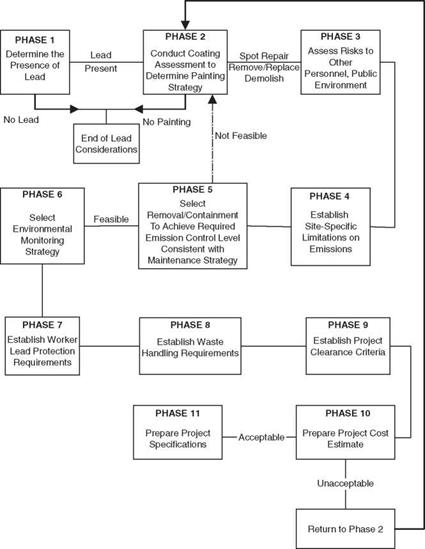Approximately 150 million tons (136 X 109 kg) of industrial waste of the type that can be potentially reused to some degree in highway projects is produced annually in the United States. Little of this waste can be landfilled. Many kinds of industrial wastes are not suitable for highway use because they are hazardous or because leachate from these materials are a threat to the environment. Through treatment, some industrial wastes otherwise deemed a threat to the environment may be rendered usable. Petroleum-contaminated soils, for instance, once thermally treated, can be used as fill material and have been used in asphalt mixtures as fine aggregates. Petroleum-contaminated soils are not currently being recycled into highway projects but have been used on road and street construction at the local level. The principal recoverable wastes from industrial activities are described below.
Coal Ash By-Products. NCHRP Synthesis 199 cites an American Coal Ash Association publication, (Coal Combustion By-Product Production and Consumption. 1992) when noting that 66 million tons (60 X 109 kg) of coal ash is produced annually from the 420 coal-burning power plants across the country. Coal is either anthracite, bituminous, or lignite (subbituminous); the particular form has a bearing on the characteristics of the by-products.
Fly Ash. ASTM divides fly ash into two classes: class F, from anthracite coal; and class C, from lignite coal. Class F fly ash reacts with calcium and water at ordinary temperatures to form a cementlike compound. Class C fly ash has a higher lime content than class F fly ash and can be self-setting. To be usable as a cementitious substitute for Portland cement, fly ash must meet quality standards established by ASTM (Standard C-618). Approximately 25 percent of the fly ash produced meets this standard, yet only about half of the viable resource is being used.
Bottom Ash and Boiler Slag. Bottom ash and boiler slag are also by-products of coal burning, amounting to approximately 18 million tons (16 X 109 kg) of waste produced annually. These by-products are being researched for use in embankments, unbound aggregate, and asphalt paving and antiskid material.
Blast-Furnace Slag. Slag that is the by-product of producing iron in a blast furnace is nonferrous and consists of silicates and aluminosilicates of lime. Of the three types of slag produced from blast furnaces (expanded, granular, and air cooled), about 90 percent of that recovered for use in construction is air cooled. Air-cooled slag is porous and suitable for use as aggregate in lightweight concrete, in asphalt, in roadway bases, and in fill material. Granulated slag can be finely ground as slag cement, and expanded slag can be used as aggregate in lightweight concrete. The primary barrier to use of slag is that it was not separated into homogeneous piles and it was mixed with steel slag.
Steel Slag. Steel slag is the product of lime flux reacting with products in a steel furnace such as pig iron. Steel slag consists of calcium, iron, unslaked lime, and magnesium. It can be very expansive if not properly “aged” through treatment with water. Because of its characteristics of being very hard, stable, and abrasion-resistant, it is used in paving material and snow control. It is heavier than most aggregate and has been used as fill material and as railroad ballast. However, some concern has developed recently that the leachate from these two uses clogs drains and can affect receiving waters. About 7.9 million tons (7.2 X 109 kg) of steel slag is sold in the United States annually.
Nonferrous Slag. Slag from smelting operations for other ores such as copper, lead, zinc, nickel, and phosphates is grouped together under a single heading. Each must be evaluated and treated separately because of the varying properties these slags possess. Phosphate slag, copper oxide blasting slag, and zinc slag have been used as aggregate in paving mixtures. Aluminum slag has been used experimentally for asphalt paving aggregate, but the material proved not to be durable and is no longer used.
Foundry Wastes. It is estimated that 3 million tons (2.7 X 109 kg) of foundry wastes are produced annually in the United States, including furnace dust, arc furnace dust, and sand residue. Foundries are concentrated primarily in the Great Lakes states. Foundry dust is often disposed of as hazardous material because of its high concentration of metals. Foundry sand, however, is not generally hazardous and has been used as fill material, pipe bedding, and fine aggregate in paving mixtures. Tests must be conducted on the material prior to reuse to determine the properties of the leachate and to ensure that it is environmentally safe. Research into the use of foundry sand is being conducted by departments of transportation in five states, and its use has met with limited success. The permanence of foundry sand as pipe bedding in Illinois, however, was not considered acceptable.
Flue Gas Desulfurization Sludge. Flue gas desulfurization sludge (FGD) is the product of wet scrubbing of flue gases at coal-burning plants and consists of calcium sulfate or sulfite slurry. These slurries are generally landfilled. By dewatering FGD (especially the sulfate slurries) and blending it with a reactant such as portland cement, or cement fly ash, the mixture can be used as stabilized base material or as fill material. FGD has also been used as a dust control palliative, and additional uses are being investigated.
Paper Mill Wastes. Inorganic paper mill sludge has been used occasionally for dust control on highway projects. Although research has indicated that spent sulfide liquor from the paper milling process may have application in soil stabilization, it is believed that a higher level of use exists for the material within the paper industry. The ash residue from burning bark at paper mills, when pulverized with coal and burned, has been shown to be as effective a portland cement substitute as class F fly ash and is being considered for use in highway projects.






